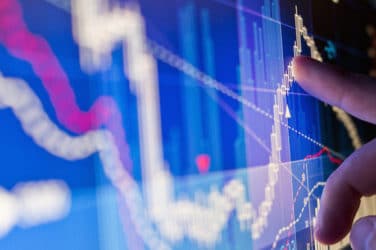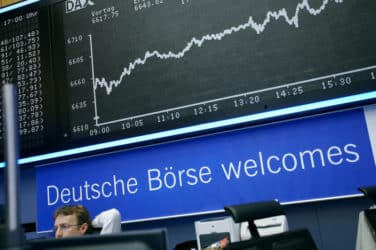The SEC has finalized its Consolidated Audit Trail, one of a string of rules aimed at aligning market structure with technology.
Identifying the impacts—both good and bad—that technology has had on capital markets is a recurring theme in the ongoing dialogue over market structure.
The proliferation of algorithmic trading, smart-order routing, high-frequency trading and dark pools has transformed the landscape for equities and is making inroads in other asset classes as well.
But as the events of the May 6, 2010 ‘flash crash’ made clear, as well as the more recent Facebook IPO debacle, technology isn’t foolproof and backstops need to be put in place in order to ensure that markets continue to function when something does go wrong.

Joe Mecane, EVP and co-head of U.S. listing and cash execution, NYSE Euronext
“Automation brings huge efficiency to the marketplace, which is ultimately good for costs and investors,” said Joe Mecane, executive vice-president and co-head of U.S. listing and cash execution at NYSE Euronext, at Markets Media’s Summer Trading Network on Wednesday.
“But the lesson of the flash crash is that ‘all-electronic all the time’, has risks, so as a result we’ve implemented various venue-specific and market-wide mechanisms to potentially slow the markets down,” said Mecane. “Sometimes we need regulators to inject some rationality into the process as these won’t always evolve on their own.”
The Securities and Exchange Commission (SEC) set out its roadmap for equity market structure in a 2010 concept release, and over the past two years has finalized several important rules, some of them—such as the banning of stub quotes and naked sponsored access—adopted in direct response to the flash crash.
“Regulators are turning up the heat on exchanges across the world, and that very regulation is a result of burgeoning technology” said Faisal Hoque, founder and chief executive of BTM Corp, a business consulting and software company.
“As exchanges continue to innovate amid stepped up competition from more nimble trading firms, the future of the industry remains murky.”
This week, the SEC issued a final rule on a Consolidated Audit Trail (CAT), which it had first proposed in 2010.
The CAT rule requires each national securities exchange to provide detailed information to a newly created central repository regarding each quote and order, and each reportable event with respect to each quote and order, such as its origination, modification, cancellation, routing and execution.
An Era of Turbulence
Regulatory changes over the past dozen years have fundamentally altered the U.S. equity markets, and along the way have led to both intended and unintended consequences.
In 1997, the SEC’s order-handling rules designated computerized trading platforms such as Instinet as electronic communication networks (ECNs).
The new regulation produced the intended consequence of providing the public with access to quotes provided by ECNs. It also produced an unintended consequence: with ECNs forced to publish their quotes, best execution requirements made it impossible for brokers to ignore them. As a result, ECNs were able to siphon market share away from the listed markets.
Within a few years of the order-handling rules, more than 10 new ECNs had entered the market, competing on price, speed and reliability.
The second major regulatory change was decimalization. The intended consequence of tighter spreads for retail investors happened quickly.
Decimalization also had unintended consequences, notably the marginalization of traditional market makers and the beginning of a trend toward rampant order slicing, tiny print sizes and algorithmic trading.
The third major regulatory change was Reg NMS (National Market System), which required that exchanges handle electronic order instantaneously or else be branded a “slow market” that could legally be traded through, or ignored, by other market participants.
Since under Reg NMS, displayed quotes could no longer be ignored, new ECNs, such as BATS and Direct Edge, were formed as consortiums by the broker-dealer community, and they aggressively gathered liquidity as the New York Stock Exchange’s market share dropped precipitously.
Community of Experts
As the CAT rule makes clear, technology has become the lingua franca of financial markets in the 21st century.
“Technology is vitally important in all aspects of our business,” said Nigel Harold, head of business development for technology at the London Stock Exchange.
“Sitting at the heart of the world’s leading capital markets we have to be able to facilitate the business that our customers are demanding.”
In order to deploy technology, exchanges must be capable of harnessing not only their own IT capabilities, but those of third-party vendors and service providers as well.
“Stock exchanges work within a community of trading participants and service providers,” said Harold. “New technology that improves reliability, accessibility, capacity, latency and functionality will always be of interest and it is not always possible to develop every aspect of technology in-house. This is where the community of experts is able to assist one another.”
In India, the Securities and Exchange Board of India (SEBI), has adopted a judicious approach with regard to market structure changes, as it closely monitors developments in the U.S. and Europe.
“Unlike some of the noise coming out of those jurisdictions, SEBI has thus far applied a robust yet practical approach to regulation,” said Hirander Misra, chairman of Forum Trading Solution, which offers security matching and surveillance services.
One such example is the ‘Broad Guidelines on Algorithmic Trading’, which SEBI introduced on March 30.
“These fall in line with international best practices and ensure the right level of monitoring and control to ensure market integrity without resorting to draconian measures such as slowing a system down,” said Misra.





